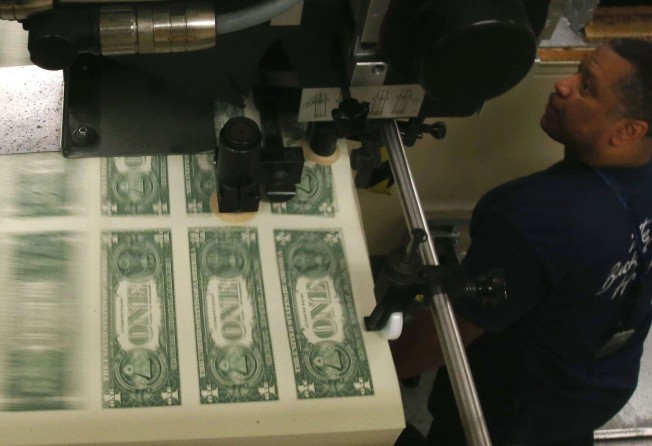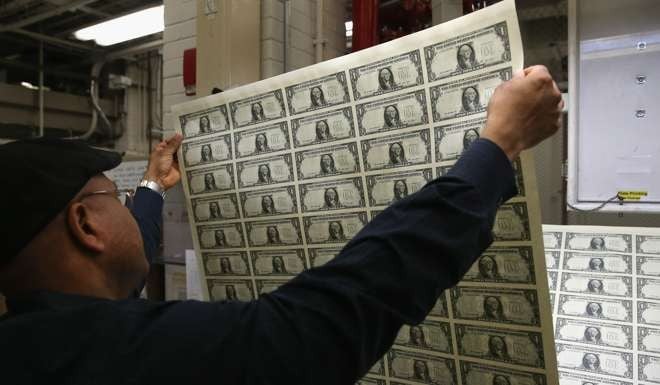Monetary policy divergence back in vogue, at least for now
Dollar’s rally stems from the same forces which caused it to surge 25pc mid-2014 to March 2015: perceived divergence in the main central banks’ policies

The dollar is on a roll.
Having dropped more than 7 per cent between the end of January and early May, the dollar index – a gauge of the greenback’s performance against a basket of its peers – has since risen 6.4 per cent, with the bulk of the increase occurring in the last two months.
On Tuesday, the index reached its highest level since early February.
The rally in the dollar stems from the same forces which caused the greenback to surge 25 per cent between mid-2014 and the end of March 2015: perceived divergence in the monetary policies of the world’s main central banks.
Investors are now attaching a nearly 75 per cent probability to a US interest rate hike in December as policymakers from the Federal Reserve strike an increasingly hawkish tone.
On Monday, Charles Evans, a Fed policymaker, even suggested that if the US economy continues to expand at its current pace, the central bank should hike rates three times by the end of next year.
The dollar’s resurgence is being accentuated by – and indeed is contributing to – the recent weakness of Europe’s single currency.
In a repeat of the euro’s decline towards the end of last year when traders were expecting the European Central Bank (ECB) to significantly expand its quantitative easing (QE) programme just as the Fed was preparing to hike rates, the single currency has dropped nearly 4 per cent against the dollar since mid-August, and currently stands at its weakest level since early March.
Make no mistake, the monetary divergence narrative is back in vogue. Investors are betting that in December the Fed will tighten policy further while the ECB will deliver another burst of monetary stimulus.
Last Thursday Mario Draghi, ECB president, ruled out an abrupt end to the central bank’s QE programme, putting the euro under further strain. The Bank of Japan (BoJ), meanwhile, which holds its monthly policy meeting next week, has no plans to scale back its purchases of government bonds as it begins to target interest rates.
The big question, however, is whether this perceived divergence in global monetary policies is real and, if so, whether it will persist.
Several emerging market (EM) currencies have already borne the brunt of the dollar’s ascent. On Tuesday, the offshore renminbi fell to its weakest intraday level since 2010, according to data from Bloomberg. JPMorgan notes that “the backdrop for [emerging] Asian FX has turned more bearish in recent weeks.” None of the region’s currencies have strengthened against the dollar this month, with the notable exception of the Philippine peso.
Still, investors remain sceptical about the scope for a further Fed-driven rise in the dollar – and rightly so, given the US central bank’s track record of talking up the prospects of a rate hike, only to hold off on tightening policy whenever market conditions deteriorate or economic data disappoints.

This partly explains why global markets are eerily calm right now.
A Bank of America Merrill Lynch gauge of anticipated price swings implied by options trading in equity, bond and currency markets is currently at its lowest level since the end of 2014.
Even the financial markets of developing economies, which stand to lose the most from a resurgent dollar given sizeable dollar-denominated debts in many countries (particularly China), are stable.
EM equities have risen 1.6 per cent in dollar terms this month while several vulnerable currencies, notably the South African rand, have even risen against the dollar – mainly because of the recent rally in the commodities sector.
There are many – indeed too many – pieces that need to fall into place for monetary policy divergence to become more pronounced.
Not only would the Fed need to tighten policy much more aggressively than markets are currently pricing in, the ultra-loose monetary policies of the ECB and the BoJ would need to become more credible and effective in the eyes of investors.
Neither of these scenarios is likely to materialise.
The Fed has committed itself to raising rates gradually while the ECB and the BoJ are struggling to cope with the adverse side-effects of monetary stimulus.
The dollar may have surged but global monetary policies are not as divergent as they seem.
Nicholas Spiro is partner of Lauressa Advisory